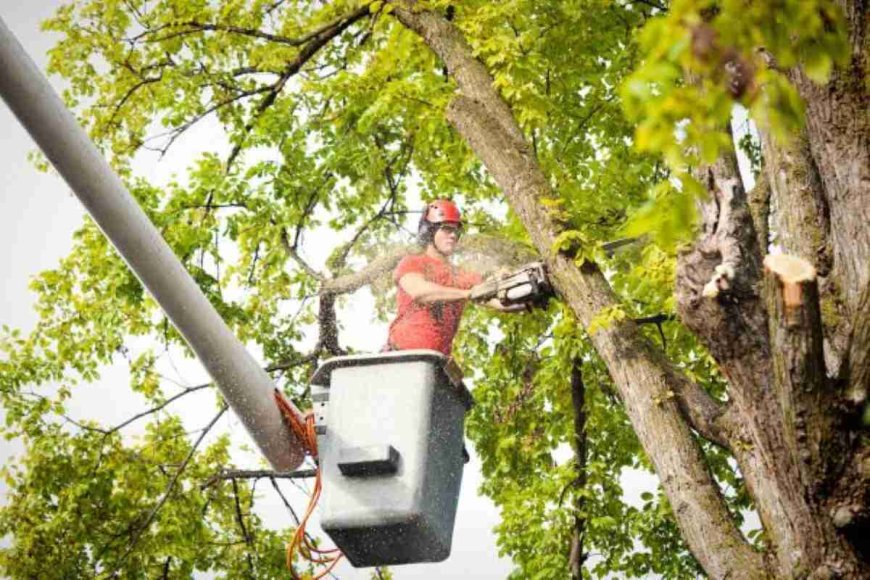Tree Removal: A Complete Guide to Safe, Smart, and Efficient Tree Cutting
Tree removal is a big decision—but sometimes a necessary one. Whether it’s a hazard, an eyesore, or just in the way, removing a tree should always be done with care, caution, and professional support.

Got a tree that's leaning, dying, or growing way too close to your house? Youre not alone. Many homeowners face the tough decision of having a tree removed, whether for safety, space, or aesthetics.
Tree removal is a delicate process that involves more than just a chainsaw and some muscleit requires planning, expertise, and safety precautions. In this guide, well explore everything you need to know before, during, and after removing a tree.
? What is Tree Removal?
Tree removal is the process of cutting down a tree and eliminating it from your property. This can include removing the trunk, branches, and sometimes even the stump and roots.
While it might seem straightforward, tree removal can be dangerous and should typically be left to professionals.
? When is Tree Removal Necessary?
You dont always need to remove a tree, but sometimes its the only safe option. Heres when its essential:
1. Dead or Dying Tree
If the tree is no longer living, it can pose a serious safety hazard.
2. Storm Damage
Trees damaged by strong winds, lightning, or heavy snow may be unstable.
3. Disease or Pest Infestation
Trees infested with termites or suffering from internal rot can fall unexpectedly.
4. Structural Threat
Trees growing too close to your home, power lines, or sewer systems can cause damage.
5. Landscaping or Construction
Sometimes, trees must be removed for home additions, driveways, or other improvements.
? Signs a Tree Needs to Be Removed
-
Hollow trunk or decaying wood
-
Fungal growth at the base (like mushrooms)
-
Large cracks or splits
-
Dead branches high in the canopy
-
Leaning significantly to one side
-
Damaged roots or lifting soil around the base
If you see any of these red flags, its time to call in an expert.
???? Why Hire Professionals for Tree Removal?
Tree removal is not a weekend DIY project. Heres why:
Safety First
Cutting a tree the wrong way can cause serious injuries or property damage.
Proper Equipment
Pros use bucket trucks, ropes, cranes, and stump grinders.
Insurance Coverage
Reputable companies are insured, protecting you in case something goes wrong.
Clean-Up Included
Professionals remove all debris, leaving your yard spotless.
? How Tree Removal Works (Step-by-Step)
Heres what you can expect during the process:
1. Inspection
A tree expert inspects the tree and its surroundings to plan the removal.
2. Site Preparation
The area is cleared of obstacles and safety gear is set up.
3. Branch Removal
Limbs are trimmed from top to bottom in a controlled manner.
4. Trunk Sectioning
The trunk is cut into manageable pieces and lowered safely.
5. Stump Handling
You can choose to leave the stump, grind it, or remove it entirely.
? How Much Does Tree Removal Cost?
Tree removal prices vary depending on size, location, and difficulty.
Average Cost Ranges:
-
Small tree (under 30 ft): $150$500
-
Medium tree (3060 ft): $400$1,200
-
Large tree (60+ ft): $1,000$2,500+
-
Stump grinding: $100$400 extra
Factors Affecting Cost:
-
Proximity to buildings or power lines
-
Condition of the tree (dead trees are riskier)
-
Emergency or same-day services
Always get a detailed quote in writing before the job begins.
? Emergency Tree Removal
Storm blew a tree onto your driveway or roof? Call for emergency services. These are typically available 24/7 and cost more due to urgency and riskbut theyre worth it when time and safety are critical.
? What Happens After Tree Removal?
1. Debris Cleanup
Most companies remove logs, branches, and leaves.
2. Stump Grinding or Removal
You can choose to eliminate the stump for a flat lawn or garden.
3. Mulching or Firewood
Some services will chip the tree into mulch or cut it into firewood for you.
? Alternatives to Tree Removal
If your tree isnt dead or dangerous, you might not need to cut it down. Consider:
-
Pruning to remove problematic branches
-
Cabling or bracing to stabilize weak limbs
-
Treatment for disease or pests
Always ask for an arborists opinion before making the final call.
? Permits and Legal Considerations
Depending on where you live, you may need a permit to remove certain treesespecially heritage or protected species. Be sure to:
-
Check local regulations
-
Talk to your HOA
-
Ask your tree service provider to help with permits
Removing a tree without a permit can lead to fines or legal trouble.
? How to Choose a Tree Removal Company
Key Qualities to Look For:
-
ISA-certified arborists
-
Proper licensing and insurance
-
Positive reviews and referrals
-
Transparent pricing
-
24/7 emergency availability
Questions to Ask:
-
Whats included in your quote?
-
Will you handle cleanup and stump removal?
-
Are you insured and bonded?
-
Do I need a permit?
??? DIY Tree Removal: Should You Do It?
For very small trees (under 10 feet), DIY might be okay. But for anything largerdont risk it.
You could:
-
Injure yourself or others
-
Damage nearby structures
-
Void your insurance
When in doubt, leave it to the professionals.
? Tree Removal Checklist
Before you proceed, make sure to:
? Inspect the trees health and structure
? Get at least 23 estimates
? Check insurance and credentials
? Confirm stump and debris handling
? Understand local regulations
? Conclusion
Tree removal is a big decisionbut sometimes a necessary one. Whether its a hazard, an eyesore, or just in the way, removing a tree should always be done with care, caution, and professional support.
Dont wait for a storm or accident to make the decision for you. If you're seeing signs your tree may need to go, take action now. Safe, smart tree removal keeps your property beautiful, secure, and ready for whatever comes next.
? FAQs About Tree Removal
1. Do I need permission to remove a tree on my property?
Maybe. Some cities require permits, especially for large or protected trees.
2. Whats the best time of year to remove a tree?
Winter or early spring is ideal, but removals can happen year-round if needed.
3. How long does tree removal take?
Most jobs take a few hours to a day, depending on size and complexity.
4. Can I keep the wood from a removed tree?
Yes! Many companies will cut it into firewood or mulch at your request.
5. Whats the difference between tree removal and tree felling?
Felling is cutting down a tree in one piece (often in forests), while removal may involve dismantling the tree in sections.











































